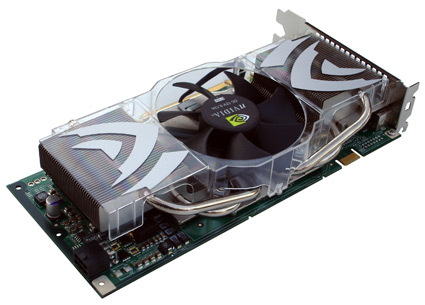NVIDIA's GeForce 7800 GTX 512 New Graphics Champion
New Features Of The 7800 GTX 512
The 7800 GTX 512 is based on the 7800 GTX, but includes a few modifications. At first glance, it might only appear that this was a cosmetic change, with NVIDIA and its add-in-board (AIB) partners merely incorporating an additional 256 MB of memory onto the PCB. In reality, the NVIDIA GeForce 7800 512 graphics card had its core redesigned with some tweaks to the layout, to improve the overall processing flow. It also now has a 512 Bbit wide bus. This is not the first time we have seen 512Bit with graphics cards - ATI incorporated a 512 Bit bus into its X1000 series cards, but even these weren't the first in the consumer space. That honor goes to Matrox with the Parhelia 512 (this company was also first with a 256 Bit memory bus.)
On the 7800 GTX 512, the internal bus is able to transfer 512 Bits of data per clock, because of its double data rate capability. External data transfers remain 256 Bit wide, so transfers to and from the 512 MB frame buffer memory remain the same. Looking back, no one ever saw the amount of memory on a graphics card equaling or surpassing the total amount of system memory, certainly not hitting 1 GB when in SLI configuration!
With a wider internal bus, and the optimizations to the core layout, NVIDIA was able to push the clock frequencies much higher that that of the original 7800 GTX. At launch in June, the GeForce 7800 GTX debuted with a core frequency of 430 MHz and memory speed set to 600 MHz. The new cards run at 550 MHz and 850 MHz (1.7 GHz data rate), which is a considerable jump
Running at higher clock frequencies requires at least one of two changes to accommodate the extra heat generated: shrinking the die size or improving cooling. NVIDIA has continued to produce these new GPUs at 110 nm, so it had to go the route of a better cooling solution. The choice for a cooler came directly from an existing part: the Quadro FX 4500. NVIDIA claims that the new core configuration and higher clock frequencies do not draw more power than the existing 7800 GTX. Wouldn't the extra heat from faster clock cycles be offset by the fact that it uses less power on the same die size? We didn't believe this and we will show you that it is not entirely true.
Get Tom's Hardware's best news and in-depth reviews, straight to your inbox.
Current page: New Features Of The 7800 GTX 512
Prev Page Up To 1 GB Video Memory With GeForce 7800 GTX 512 SLI Next Page New Drivers And SLI Compatibility

